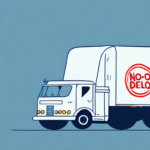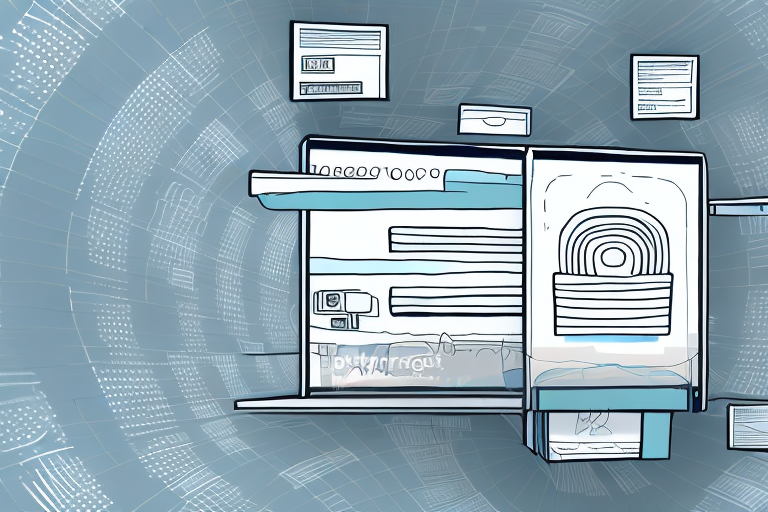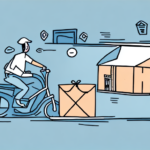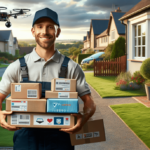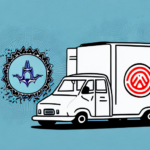What is Contactless Delivery?
Contactless delivery has emerged as a pivotal solution in the modern logistics landscape, particularly highlighted during the COVID-19 pandemic. This delivery method allows customers to receive their orders without any physical interaction with the delivery personnel, enhancing safety and convenience.
How Does Contactless Delivery Work?
Order Placement
Customers select the contactless delivery option when placing an order online or via phone. This choice signals the delivery personnel to adhere to specific protocols designed to minimize physical contact.
Delivery Process
Upon arrival, the delivery person places the order at a predetermined location, such as the doorstep or porch. They then distance themselves safely, allowing the customer to retrieve their order without direct interaction.
Technology Integration
Advancements in technology, including the use of mobile apps and automated notifications, streamline the contactless delivery process. These technologies ensure timely updates and enhance the overall efficiency of deliveries.
Benefits of Contactless Delivery
Enhanced Safety
Contactless delivery significantly reduces the risk of virus transmission by eliminating direct contact between customers and delivery personnel. This is especially crucial for vulnerable populations such as the elderly or those with compromised immune systems.
Convenience and Accessibility
Customers can receive essential goods without leaving their homes, providing a convenient solution for those unable to venture out due to health concerns or mobility issues.
Support for Social Distancing
By minimizing face-to-face interactions, contactless delivery supports ongoing social distancing measures, contributing to public health efforts in controlling the spread of infectious diseases.
Environmental Impact
Adopting contactless delivery can lead to a reduction in paper receipts and optimize delivery routes, thereby lowering carbon emissions and promoting sustainability.
Safety Measures in Contactless Delivery
Personal Protective Equipment (PPE)
Delivery personnel are required to wear masks and gloves to safeguard both themselves and the recipients. This standard practice is essential in maintaining hygiene standards.
Sanitization Protocols
Regular sanitization of delivery equipment and vehicles ensures that all surfaces remain clean, further reducing the risk of contamination.
Contactless Payment Options
Implementing digital payment methods such as online transactions or mobile payments minimizes the need for physical exchange of cash or credit cards, enhancing safety.
The Future of Contactless Delivery
Technological Innovations
The integration of drones and autonomous robots in delivery services is expected to revolutionize the industry. These technologies promise faster and more efficient deliveries while eliminating human contact.
Increased Adoption
As consumer preferences shift towards safer and more convenient delivery options, the adoption of contactless delivery is projected to become a standard practice across various sectors.
Sustainability Initiatives
Future contactless delivery systems are likely to incorporate eco-friendly practices, such as electric delivery vehicles and sustainable packaging, to further reduce environmental impact.
Contactless vs. Traditional Delivery Methods
Pros of Contactless Delivery
- Reduced risk of disease transmission
- Increased convenience and accessibility
- Support for social distancing measures
- Potential environmental benefits
Cons of Contactless Delivery
- Lack of personal interaction may affect customer relationships
- Dependence on technology and potential technical issues
- Possible delays if delivery personnel are unavailable for assistance
Choosing the Right Delivery Method
The choice between contactless and traditional delivery methods depends on individual preferences, health considerations, and the specific needs of the customer. Both methods have their unique advantages and challenges.
Sustainable and Local Support Practices in Contactless Delivery
Reducing Waste
Utilizing reusable packaging materials and minimizing single-use plastics as part of contactless delivery practices contribute to environmental sustainability.
Supporting Local Businesses
Contactless delivery enables customers to continue supporting local businesses during crises, ensuring economic stability within communities.
Challenges and Risks for Small Businesses
Implementation Costs
Adopting contactless delivery systems may require significant investment in technology and infrastructure, posing financial challenges for small businesses.
Competitive Pressure
Small businesses must balance the benefits of contactless delivery with the potential loss of personal customer interactions, which are vital for building long-term relationships.
Ensuring Data Privacy
Protecting customer data remains a critical concern. Small businesses must implement robust security measures to safeguard personal information collected during the delivery process.
Ensuring Food Quality and Freshness with Contactless Delivery
Proper Packaging
Using insulated and secure packaging maintains the temperature and integrity of food items, ensuring they remain fresh upon delivery.
Timely Delivery
Efficient logistics and real-time tracking systems help ensure that food is delivered promptly, preserving its quality and safety.
Customer Communication
Clear instructions and prompt notifications regarding order status allow customers to retrieve their deliveries without unnecessary delays, maintaining food freshness.















